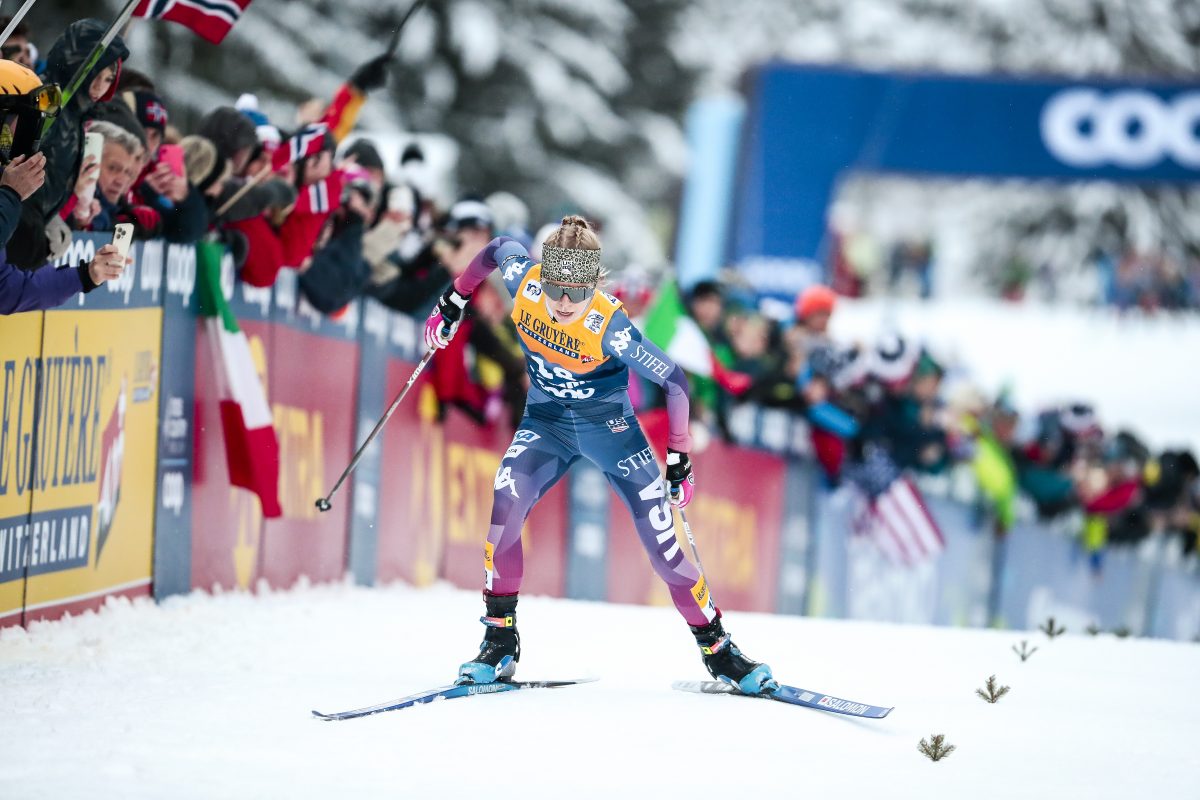“We came into it with the idea of making a really cool video about a race that had never been filmed well before,” Anchorage native Max Romey said in a Skype interview.
Romey, a junior cross-country runner at Western Washington University (WWU) who turned 21 on Monday, was talking about the Mount Marathon hill climb, the “Olympics of Alaska,” in Seward, Alaska.

The up-and-down race is just a little over five kilometers total, but starts at sea level in Seward and reaches halfway at the top of the mountain 3,022 feet above sea level. From there, racers begin a headlong plunge back into town. It is not uncommon for racers to finish muddy and bloody.
In Sept. 2013, Romey published a 43-minute-long video called “A New Mt. Marathon Record,” his largest-scale production that generated more than 27,000 views on YouTube.
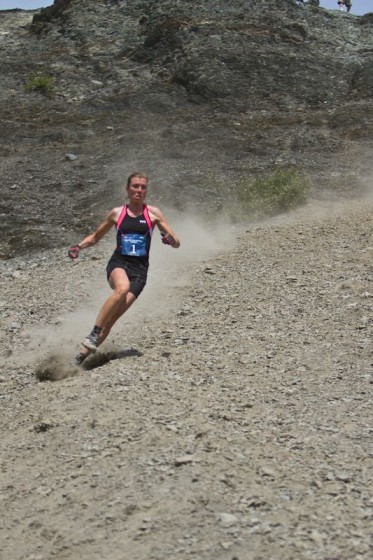
Together with Natalie Fedak, his freshman-dorm resident advisor at WWU, Romey has been working on his latest project, a 20- to 30-minute documentary of the 2014 race. The film, 3022 ft., will include pre- and post-race interviews with the athletes, as well as plenty of race-day footage.
Mt. Marathon is Alaska’s oldest race, first formally organized in 1915 and based on a running bet from several years prior. It is also among Alaska’s most competitive races, with a lottery to get into the race and the state’s best athletes vying for the top spots.
In an interview with iRunFar.com, 2009 winner and 2014 runner-up Matias Saari summed it up:
“To give you an idea of how competitive Mount Marathon is, Salomon-sponsored Rickey Gates finished just seconds behind Kilian Jornet at September’s The Rut Vertical K, but placed fourth at Mount Marathon [in 2014],” Saari said. “In 2013, Rickey broke the Mount Marathon course record, but didn’t win the race, as [Alaska Pacific University nordic coach] Eric Strabel was even faster.”
Also from APU, Holly Brooks, a former U.S. Ski Team member who competed at the 2014 Winter Olympics, won her second Mt. Marathon title this past July. Brooks dominated the uphill portion, reaching the top 2 minutes and 5 seconds before Christy Marvin in second. But Marvin is a ferocious downhiller, and by the time she crossed the finish line she was just three seconds behind Brooks.
“The race was insane – probably the most exciting women’s race ever,” Romey recalled of the 2014 edition. “Just knowing what was behind it, and it was closest ever, and we filmed everything, and we were lucky enough that it turned out super-suspenseful and exciting. The part I’m really excited about sharing is the stories behind it.”
The 6-foot-4, energetic junior is pursuing an interdisciplinary degree in cultural diversity, environmental science and film that entails “basically filming a bunch of other cool stuff,” he said.
A two-time Alaska state champion from Service High (in the 3,200 meters and 1,600 meters in 2012), Romey is a varsity runner at WWU and started making films about running when he was injured his freshman year of college. During that time he devoted his energy to filming the team’s practices and races.
Last November, he published a 3:45-minute video about his cross-country team leading up to the 2013 NCAA Division II national championships.
In 3022ft., Romey explores the backstories of the Mt. Marathon’s main characters, from record-holder Strabel to young phenom Allie Ostrander.
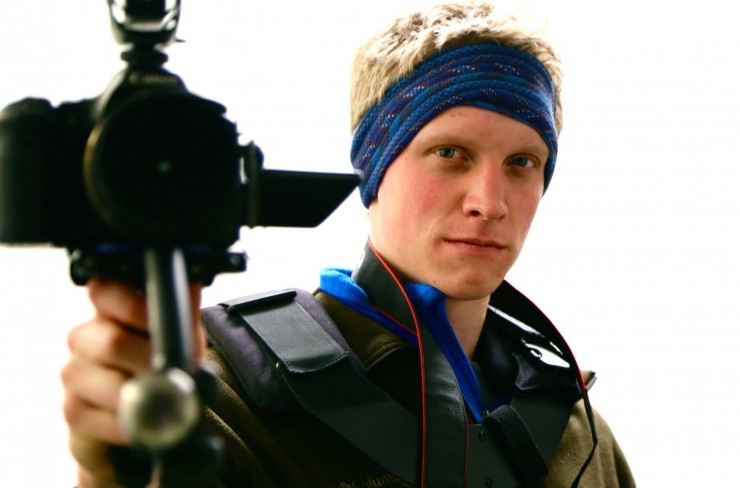
However, it was the race’s women that captured Romey’s attention, and he has his work cut out condensing hours of interviews with Brooks, Marvin, Najeeby Quin, and Denali Foldager, among others, into a relatively short film.
“We got a lot of these interviews and the story that we ended up following was one of predominantly really strong women in this sport,” Romey explained. “But the part I’m really excited about sharing is the stories behind it, you know, like the stakes of why Holly is going into this race, why she’s racing against Najeeby and Christy and Denali and all these other really strong women who don’t get the recognition that the men’s race gets … [The women] are working just as hard as the men, they’re just doing it for eight more minutes.”
“The race was insane – probably the most exciting women’s race ever.” — Max Romey, 20-year-old filmmaker from Western Washington University
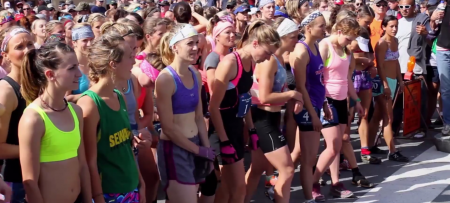
Romey’s goal is to release a video that is partly about the emotional drama of racing — the preparation, the emotional hurdles, the fear of the treacherous downhills — and partly about the beauty and excitement of the race itself, with tight shots of runners barreling down the loose mountainside matched with panoramic shots above the picturesque seaside town of Seward on Alaska’s Kenai Peninsula.
Before the 2014 race even started, however, Romey encountered an unexpected obstacle. He asked permission to fly his drone — a tiny, remote control helicopter equipped with a camera — and was denied.
“I asked Seward and Seward asked the FAA and then the town of Seward said ‘no,’ ” he recalled. “[This] hurt me to hear because so many people do it and just don’t ask, but I was the one that asked permission, and now I’m the one that is being told no.”
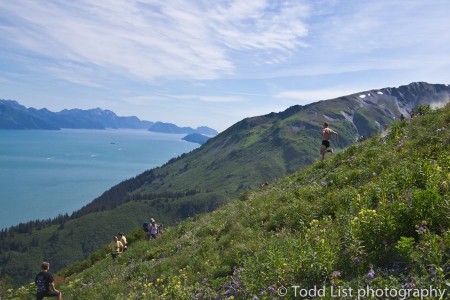
Romey scrambled for a solution, and so to get the footage for the video, he positioned 12 photographers with video cameras all over the race course — 20 cameras, in all.
“I pulled every string I had just to make sure I had everything captured,” he said. “Or tried to have everything captured; we missed some stuff even with 20 cameras going.”
What Romey was left with was over a terabyte (1,000 GB) of footage, including many hours — “many more than I need,” he said — of interview footage. Romey said that, on race day, he ran or hiked nearly nine miles to film a three-mile race. Has he run Mt. Marathon?
“My coach at Western says I’m not allowed to, just because it’s a leg breaker,” he said.
On Oct. 2, Romey released the trailer for the video and started a one-month crowdsourcing campaign to help fund the production of the video, estimated at $45,000. As of Oct. 31, he’d raised $8,589, or 19 percent, of that goal. But that wouldn’t stop him from finishing it.
“The only thing that puts our schedule at risk is if we don’t get enough money to hire the people who would make the post-production phase shorter and the final product better,” he explained on his fundraising site. “We don’t want to rush this film; we have a production schedule that allows for revision, critique and refining, but at a pace that demands several hours of work each day.
“If worst comes to worst and we are forced to extend our schedule, we will still finish the film,” he added. “But extending the schedule means slowing the distribution of our film to you, our supporters, as well as risking film festival entries if we miss the deadlines.”
While the campaign ended, there were still options to support Romey on his website: 3022ft.com. And when it comes to the thought of releasing his final film, Romey bubbles over with excitement.
“All this footage is in a hard drive, and I just can’t wait to pack it into 25 minutes and share it with everybody,” he said. “It’s like having this secret and I’m just waiting to tell it.”
On Oct. 27, Romey published his latest project, “Alaskan Recess,” a 2:30-minute trail-running video with the tagline, “If trails are nature’s playground, then recess never has to end.” He also used his drone to film and follow Brooks during an “all uphill” rollerski/trail run up Hatcher Pass.
“This kid’s going somewhere,” Brooks said in an October interview. “We were talking about the eventual premiere of the Mount Marathon documentary and we’re talking about it at a brewery, and he [wasn’t] even old enough to drink … He’s one of the most organized and hard working people I know.”


